The Iranian government yesterday warned people against further protests after two days of demonstrations sparked by anger over an array of economic problems.
“We urge all those who receive these calls to protest not to participate in these illegal gatherings, as they will create problems for themselves and other citizens,” Iranian Minister of the Interior Abdolreza Rahmani Fazli said.
State broadcaster Islamic Republic of Iran News Network said it had been banned from covering the protests that on Thursday spread from Iran’s second city, Mashhad, to other areas.
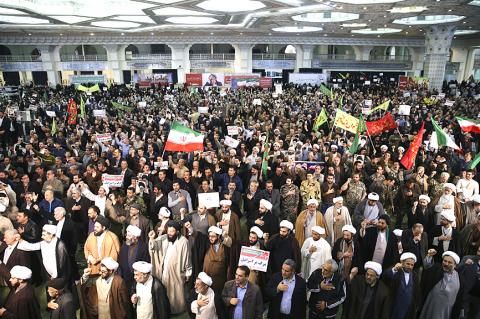
Photo: AP
The protests initially targeted economic problems, but quickly turned against the Muslim regime as a whole.
US President Donald Trump said “the world is watching” after dozens of demonstrators were arrested.
Media coverage inside Iran focused almost exclusively on pro-regime rallies held yesterday to mark the defeat of the last major protest movement in 2009.
The timing was coincidental, as the rallies are held every year on Dec. 30, but offered a handy show of strength to the regime as huge crowds of black-clad supporters gathered across the country.
“The enemy wants once again to create a new plot and use social media and economic issues to foment a new sedition,” Ayatollah Mohsen Araki told a crowd in Tehran, the conservative Fars news agency reported.
Video footage on social media showed hundreds marching through the holy city of Qom on Friday evening, with people chanting “Death to the dictator” and “Free political prisoners.”
There were even chants in favor of the monarchy toppled by the 1979 Islamic revolution, while others criticized the regime over its support of the Palestinians and other regional movements rather than focusing on problems at home.
Footage showed thousands gathered in cities including Rasht, Hamadan, Kermanshah and Qazvin, with police responding with water cannons.
Officials were quick to blame outside forces for the unrest.
“Although people have a right to protest, protesters must know how they are being directed,” Iranian Vice President for Women and Family Affairs Masoumeh Ebtekar said on Twitter.
Since the 2009 protests were ruthlessly put down by the Islamic Revolutionary Guard Corps, many middle-class Iranians have abandoned hope of pressing for change from the streets.
However, low-level strikes and demonstrations have continued, often on a sector-by-sector basis, as bus drivers, teachers or workers from specific factories protest against unpaid wages or poor conditions.
Some of this week’s protests were directed against financial scandals linked to unauthorized lending institutions that collapsed with the loss of hundreds of thousands of accounts.
Payam Parhiz, editor-in-chief of reformist Nazar media network that broke the news of the Mashhad protests, said they were more focused on the economy than those in 2009, which were sparked by allegations of election-rigging.
“Then, they were middle-class and their slogans went beyond economic matters to things like cultural liberties,” he told reporters. “Today, the concerns are economic. There are people who have lost their life savings. They will protest until their problems are resolved.”
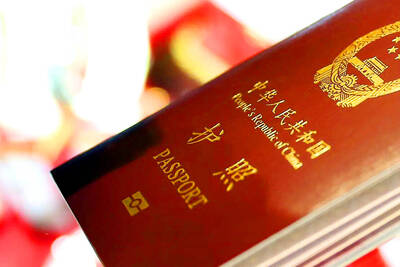
The Ministry of the Interior (MOI) is to tighten rules for candidates running for public office, requiring them to declare that they do not hold a Chinese household registration or passport, and that they possess no other foreign citizenship. The requirement was set out in a draft amendment to the Enforcement Rules of the Public Officials Election and Recall Act (公職人員選舉罷免法 ) released by the ministry on Thursday. Under the proposal, candidates would need to make the declaration when submitting their registration forms, which would be published in the official election bulletin. The move follows the removal of several elected officials who were
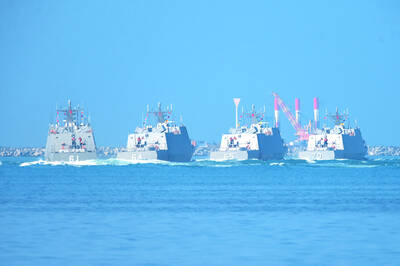
FOUR DESIGNATED AREAS: Notices were issued for live-fire exercises in waters south and northwest of Penghu, northeast of Keelung and west of Kaohsiung, they said The military is planning three major annual exercises across the army, navy and air force this month, with the navy’s “Hai Chiang” (海強, “Sea Strong”) drills running from today through Thursday, the Ministry of National Defense said yesterday. The Hai Chiang exercise, which is to take place in waters surrounding Taiwan, would feature P-3C Orion maritime patrol aircraft and S-70C anti-submarine helicopters, the ministry said, adding that the drills aim to bolster the nation’s offshore defensive capabilities. China has intensified military and psychological pressure against Taiwan, repeatedly sending warplanes and vessels into areas near the nation’s air defense identification zone and across
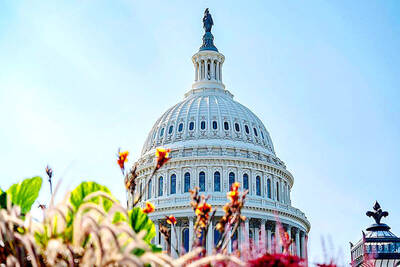
SENATE RECOMMENDATION: The National Defense Authorization Act encourages the US secretary of defense to invite Taiwan’s navy to participate in the exercises in Hawaii The US Senate on Thursday last week passed the National Defense Authorization Act (NDAA) for Fiscal Year 2026, which strongly encourages the US secretary of defense to invite Taiwan’s naval forces to participate in the Rim of the Pacific (RIMPAC) exercise, as well as allocating military aid of US$1 billion for Taiwan. The bill, which authorizes appropriations for the military activities of the US Department of Defense, military construction and other purposes, passed with 77 votes in support and 20 against. While the NDAA authorizes about US$925 billion of defense spending, the Central News Agency yesterday reported that an aide of US
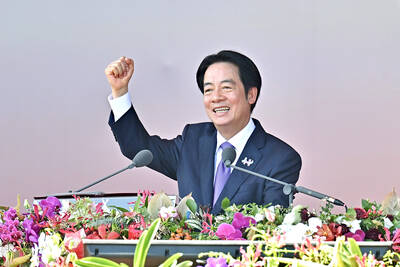
NATIONAL DAY: The ‘Taiwan Dome’ would form the centerpiece of new efforts to bolster air defense and be modeled after Israel’s ‘Iron Dome,’ sources said President William Lai (賴清德) yesterday pledged to strengthen the nation’s air defense capabilities and build a “T-Dome” system to create a safety net against growing military threats from China. “We will accelerate our building of the T-Dome, establish a rigorous air defense system in Taiwan with multi-layered defense, high-level detection and effective interception, and weave a safety net for Taiwan to protect the lives and property of citizens,” he said in his National Day address. In his keynote address marking the Republic of China’s (ROC) 114th anniversary, Lai said the lessons of World War II have taught nations worldwide “to ensure that